 |
 |
Our enthusiastic and extremely knowledgeable perennials team is here to answer your questions and help you choose the best perennials for your situation. There’s always something in bloom for sun, shade, butterflies, birds or deer resistance as well as a variety of bulbs for your space.
Stroll through our time-tested favorites and introduce yourself to the newest varieties. We garden with perennials too; we love them and it shows!
|
43 found, showing page 2 of 3
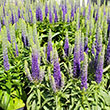
Deep blue-purple blooms. Upright compact foliage. USDA 3-8
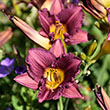
Ruffled purple blooms with yellow throats. Rebloomer. USDA 3-9
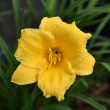
Plant Height: 12 inches
Flower Height: 18 inches
Spacing: 14 inches
Sunlight: full sun, partial shade
Hardiness Zone: 2b
Other Names: Stella D'Oro Daylily
Description:
An early bloomer with a compact habit; fragrant, rich golden yellow, ruffled flowers stand out against green arching foliage; reblooming in the late summer months; easy to grow, perfect for borders, beds and containers; drought tolerant once established
Ornamental Features:
Stella de Oro Daylily features bold gold trumpet-shaped flowers at the ends of the stems from early summer to early fall. The flowers are excellent for cutting. Its grassy leaves remain green in color throughout the season.
Landscape Attributes:
Stella de Oro Daylily is an herbaceous perennial with a shapely form and gracefully arching foliage. It brings an extremely fine and delicate texture to the garden composition and should be used to full effect.
This is a relatively low maintenance plant, and is best cleaned up in early spring before it resumes active growth for the season. It is a good choice for attracting butterflies to your yard. It has no significant negative characteristics.
Stella de Oro Daylily is recommended for the following landscape applications:
- Mass Planting
- Border Edging
- General Garden Use
- Groundcover
- Container Planting
Planting & Growing:
Stella de Oro Daylily will grow to be about 12 inches tall at maturity extending to 18 inches tall with the flowers, with a spread of 18 inches. When grown in masses or used as a bedding plant, individual plants should be spaced approximately 14 inches apart. Its foliage tends to remain dense right to the ground, not requiring facer plants in front. It grows at a medium rate, and under ideal conditions can be expected to live for approximately 10 years. As an herbaceous perennial, this plant will usually die back to the crown each winter, and will regrow from the base each spring. Be careful not to disturb the crown in late winter when it may not be readily seen!
This plant does best in full sun to partial shade. It is very adaptable to both dry and moist locations, and should do just fine under typical garden conditions. It is not particular as to soil type or pH. It is highly tolerant of urban pollution and will even thrive in inner city environments. This particular variety is an interspecific hybrid. It can be propagated by division; however, as a cultivated variety, be aware that it may be subject to certain restrictions or prohibitions on propagation.
Stella de Oro Daylily is a fine choice for the garden, but it is also a good selection for planting in outdoor pots and containers. It is often used as a 'filler' in the 'spiller-thriller-filler' container combination, providing a mass of flowers against which the thriller plants stand out. Note that when growing plants in outdoor containers and baskets, they may require more frequent waterings than they would in the yard or garden.
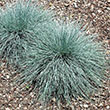
Intense blue foliage. Non-fading. Semi-evergreen. USDA 4-9
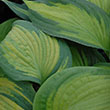
Gold centered green foliage. White blooms. USDA 3-9
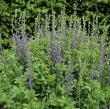
Blue Blooms. Shruby. Tolerates deer, drought, & poor soils. USDA 3-9
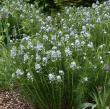
Long-lived plant with clusters of blue flowers in May and June and golden fall color on an upright, bushy plant. USDA 5-8
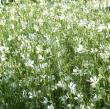
Pure white blooms. Compact. Tolerates poor soils. USDA 5-9
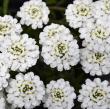
White blooms. Uniform mounding evergreen groundcover. USDA 4-8
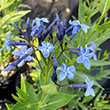
Native clump-forming slow speading groundcover. Blue spring flowers, feathery green summer foliage, and golden fall color. USDA 5-9
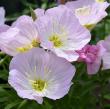
Light pink blooms. Long blooming, easy care plant. Naturalizes quickly. USDA 5-9
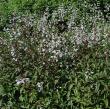
Plant Height: 18 inches
Flower Height: 30 inches
Spacing: 18 inches
Sunlight: full sun partial shade
Hardiness Zone: 3b
Other Names: Beardtongue
Ornamental Features:
Husker Red Beard Tongue has masses of beautiful spikes of white tubular flowers rising above the foliage from early to mid summer, which are most effective when planted in groupings. The flowers are excellent for cutting. Its attractive narrow leaves emerge burgundy in spring, turning dark green in color with distinctive deep purple edges throughout the season. The deep purple stems are very colorful and add to the overall interest of the
plant.
Landscape Attributes:
Husker Red Beard Tongue is an herbaceous perennial with an upright spreading habit of growth. Its medium texture blends into the garden, but can always be balanced by a couple of finer or coarser plants for an effective composition.
This is a relatively low maintenance plant, and is best cleaned up in early spring before it resumes active growth for the season. It is a good choice for attracting butterflies and hummingbirds to your yard. It has no significant negative characteristics.
Husker Red Beard Tongue is recommended for the following landscape applications:
- Mass Planting
- Border Edging
- General Garden Use
- Container Planting
Planting & Growing:
Husker Red Beard Tongue will grow to be about 18 inches tall at maturity extending to 30 inches tall with the flowers, with a spread of 24 inches. When grown in masses or used as a bedding plant, individual plants should be spaced approximately 18 inches apart. It grows at a fast rate, and under ideal conditions can be expected to live for approximately 10 years. As an herbaceous perennial, this plant will usually die back to the crown each winter, and will regrow from the base each spring. Be careful not to disturb the crown in late winter when it may not be readily seen!
This plant does best in full sun to partial shade. It prefers dry to average moisture levels with very well-drained soil, and will often die in standing water. It is considered to be drought-tolerant, and thus makes an ideal choice for a low-water garden or xeriscape application. It is not particular as to soil type or pH. It is somewhat tolerant of urban pollution. This is a selection of a native North American species. It can be propagated by cuttings; however, as a cultivated variety, be aware that it may be subject to certain restrictions or prohibitions on propagation.
Husker Red Beard Tongue is a fine choice for the garden, but it is also a good selection for planting in outdoor pots and containers. With its upright habit of growth, it is best suited for use as a 'thriller' in the 'spiller-thriller-filler' container combination; plant it near the center of the pot, surrounded by smaller plants and those that spill over the edges. Note that when growing plants in outdoor containers and baskets, they may require more frequent waterings than they would in the yard or garden.
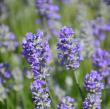
Fragrant purple blooms. Uniformly mounding. Compact. MUST have good drainage. USDA 5-8
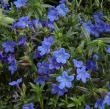
Bright purpley blue blooms. Deep green foliage. Groundcover. USDA 6-8
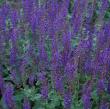
Indigo floer spikes. Fragrant dark green foliage. Upright. Clumping. USDA 4-8
43 found, showing page 2 of 3






